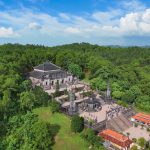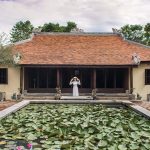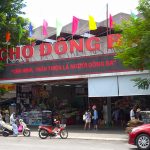Explore the optimal seasons to experience Hue's rich cultural heritage. This guide reveals the best time to visit Hue, considering weather patterns, festivals, and tourist crowds to help you plan an unforgettable trip to Vietnam's former imperial capital.
List of Contents
- 1. Overview Of The Best Time To Visit Hue
- 2. Geography and Its Impact on Hue's Weather
- 3. Typical Features of Hue's Weather
- 4. Hue's Weather by Month
- 5. Determining the Best Time to Visit Hue
- 6. Festivals and Events in Hue
- 7. Useful Tips for Traveling to Hue
- 8. Must-See Attractions in Hue
- 9. Conclusion On The Best Time To Visit Hue
- FAQ
1. Overview Of The Best Time To Visit Hue
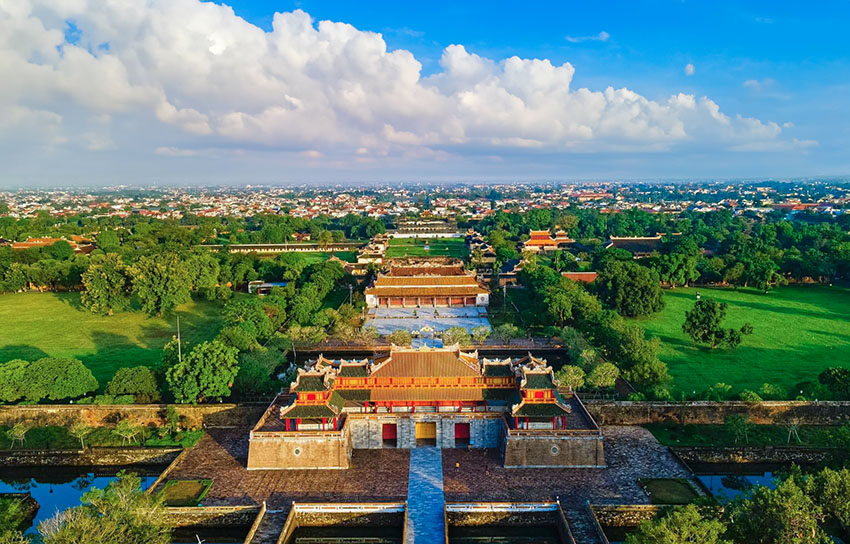
Hue, the ancient imperial city of Vietnam, is a place of history and beauty. It sits by the Perfume River and was the capital during the Nguyen Dynasty from 1802 to 1945. The Hue Imperial City, a UNESCO World Heritage site, has the Forbidden Purple City, royal tombs, and grand palaces.
To make the most of Hue, you must know the weather and travel seasons. Hue has a tropical monsoon climate with two seasons: the dry season from March to August and the rainy season from September to February.
March to April in the dry season has the best weather for seeing the outdoor attractions. The rainy season is less crowded and makes the land green, which some may prefer.
Plan your visit based on the seasons for the best time in Hue. You can walk along the river, see the imperial architecture, and eat the local cuisine. Hue is a journey into Vietnam's royal past and a place of great beauty and depth.
2. Geography and Its Impact on Hue's Weather
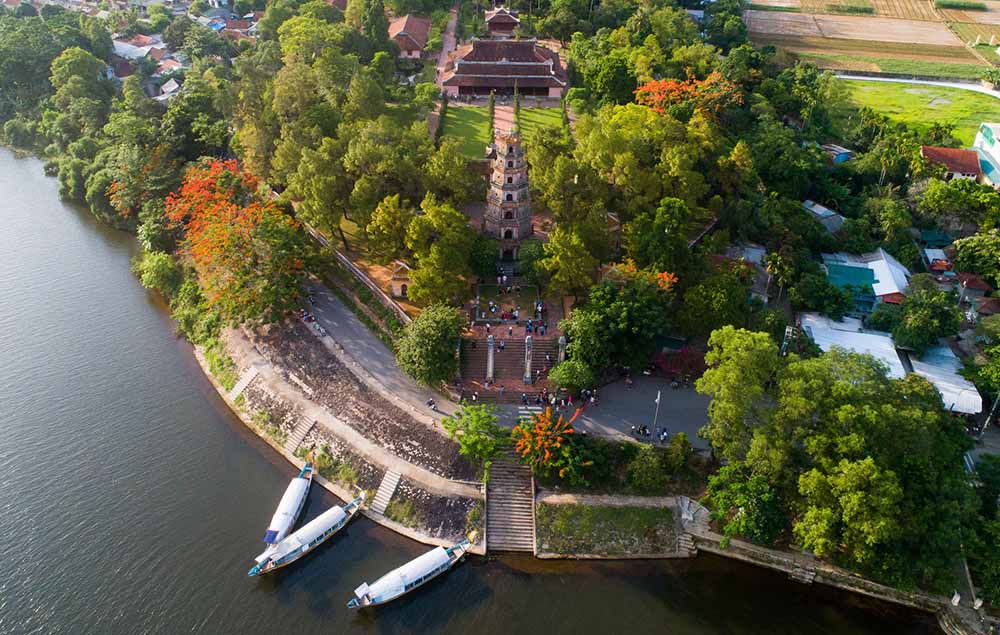
Hue, strategically located in central Vietnam, lies close to the East Sea (South China Sea) coast. This positioning, approximately midway between Hanoi and Ho Chi Minh City, profoundly impacts its distinctive climate. To determine the best time to visit Hue, understanding the influence of geography on its weather is crucial.
From September to February, the Northeast monsoon brings the bulk of Hue's annual rainfall. During this period, the city can experience significant flooding, especially along the Perfume River banks.
Conversely, from March to August, Hue goes through its dry season with less precipitation. This is the ideal time to explore the city's attractions and historical sites.
The East Sea moderates Hue's temperatures, with sea breezes cooling the air during hot summer months and creating milder winters compared to inland areas. These coastal winds also contribute to Hue's high humidity levels, enhancing the sensation of both heat and cold.
3. Typical Features of Hue's Weather
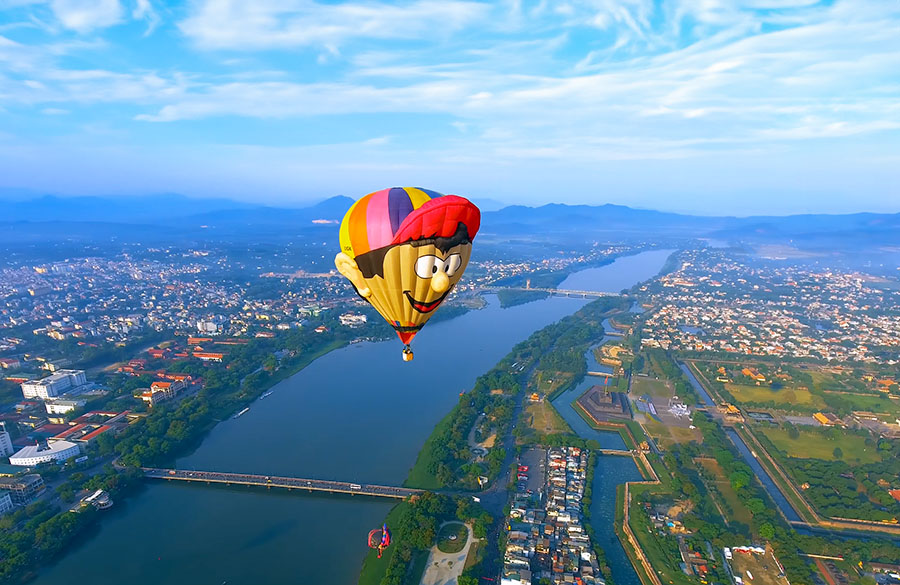
3.1. Seasons in Hue
3.1.1. Dry season (March to August).
The best time to visit Hue is during the dry season, from March to August. This period offers ideal weather conditions for various leisure activities.
Temperatures range from 17 to 39°C (63 to 102°F), perfect for beach relaxation, trekking, and outdoor adventures. While rain may occur, most days are sunny and cloudy.
From March to May, expect cloudy days and occasional drizzles in certain areas, with humidity around 75%. Mornings and nights are quite cool, while afternoons and evenings are warmer and sunnier.
Nature enthusiasts will find June, July, and August to be the best months to explore Hue. Temperatures soar to 25-39°C (77-102°F), with humidity ranging from 68 to 98%.
Most days are sunny, with some areas experiencing intense heat. Evening thunderstorms provide relief from the daytime heat.
What to Do
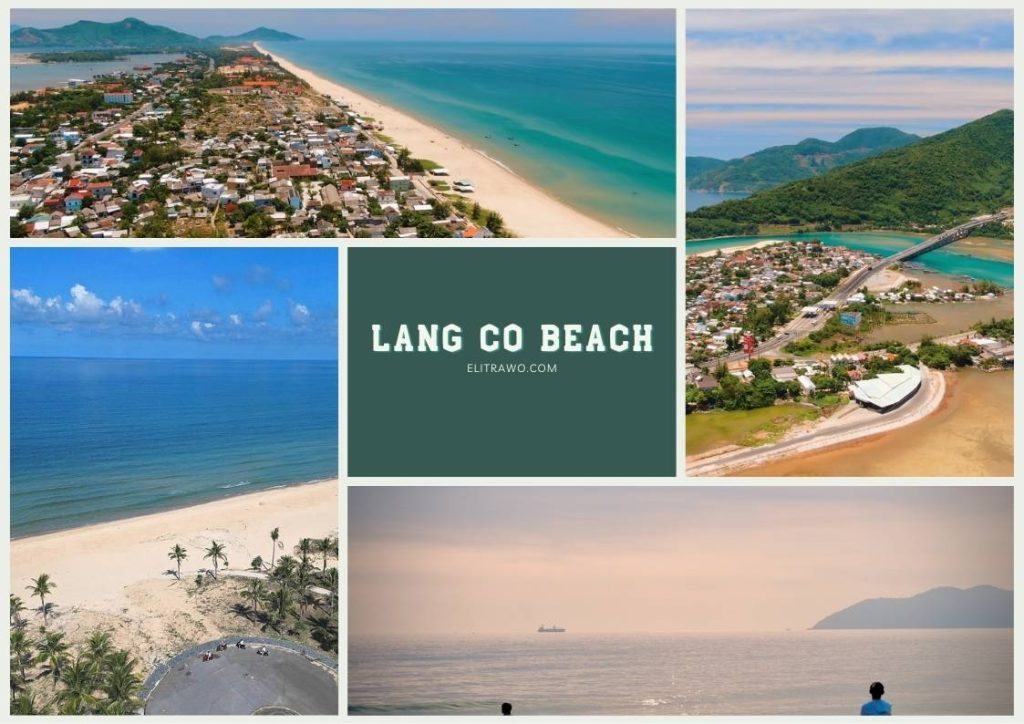
A visit to the Hue Imperial City, a UNESCO World Heritage Site, is a must. This architectural marvel spans 13 reigns of the Nguyen Emperors and holds significant historical value.
From May to June, the Hue Festival showcases Vietnam's cultural and historical richness through fine arts exhibitions, royal treasures displays, flower lantern ceremonies on the Perfume River, and the Ao Dai festival.
Hue's stunning beaches, like Lang Co and Thuan An, are perfect for escaping the heat from June to August. Immerse yourself in the crystal-clear waters and enjoy the white sand stretches.
Trekking and swimming in the pristine streams of Bach Ma National Park is another refreshing option. August is the best month to admire the tranquil beauty of Tam Giang Lagoon, one of Southeast Asia's largest, and savor delicious seafood at affordable prices.
Travel Tips
Be prepared for sudden rains during the dry season by carrying an umbrella and wearing a hat. Pack quick-drying clothing, light jackets, and comfortable pants. Don't forget sunscreen, sunglasses, and mosquito repellent.
As the dry season is the best time to visit Hue, it attracts many domestic tourists, especially in June and July. Book tourist services three months in advance for the best deals.
3.1.2. Wet season (September to February).
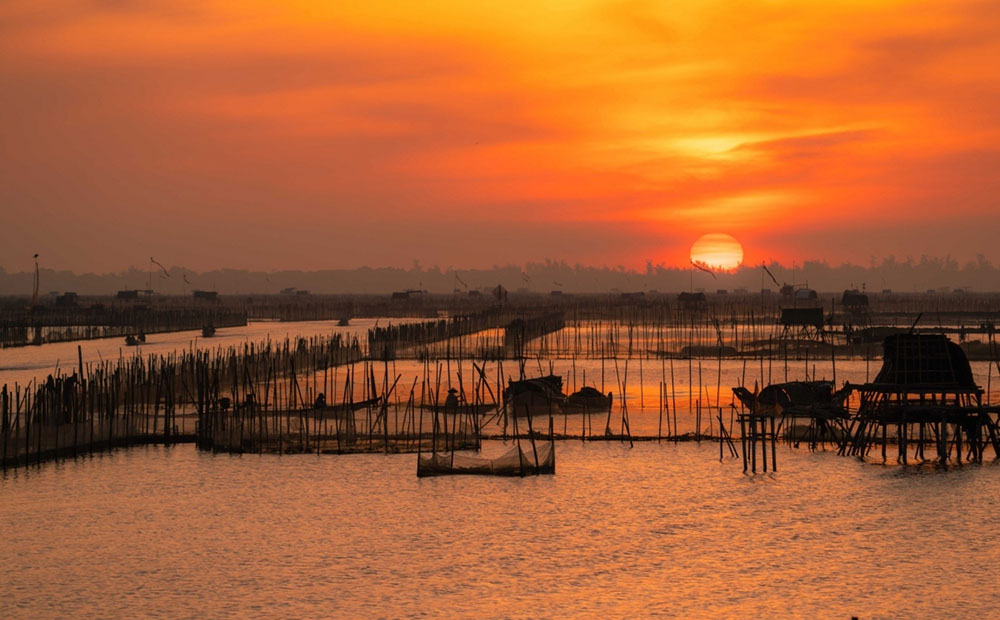
September to February marks the wet season in Hue, with temperatures ranging from 17-36°C (63-97°F). Expect high rainfall, 68-98% humidity, cloudy and overcast days, and cold evenings with thundery rains.
October to November is the storm season, with seemingly endless heavy rain and temperatures from 17-33°C (63-91°F). Mornings and nights are chilly.
Weather improves in January and February, with sunny days, cool breezes, an average temperature of 23°C (73°F), and evening rains.
What to Do
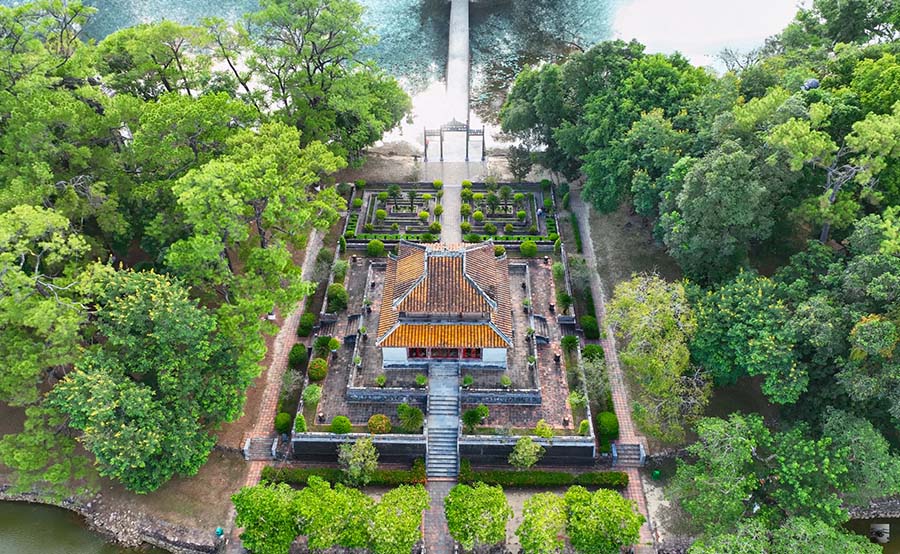
Despite the unfavorable weather, Hue offers captivating indoor activities during the wet season. Visit historic pagodas like Thien Mu, built in 1601, featuring impressive architecture and serene beauty that once attracted Vietnamese emperors. Rainy days are perfect for exploring this national pagoda.
Tour the architectural masterpieces of the Nguyen Emperor Tombs, such as Gia Long, Khai Dinh, and Tu Duc Tombs. Relax with hydrotherapy, heat therapy, and mineral baths at My An and Thanh Tan Springs, which help reduce stress and improve blood circulation.
Savor hot, delicious dishes at Dong Ba Market, a haven for foodies. Hue cuisine is excellent for those who enjoy spicy and tasty foods. Must-try dishes include Bun rieu, Bun bo hue, and banh bot loc (Vietnamese shrimp dumplings).
January and February bring pleasant weather with sunlit days and captivating festivals in Hue Imperial City and pagodas during the Lunar New Year. Discover Vietnamese culture during this festive season.
Explore indoor attractions like the Hue Royal Antiquities Museum and local galleries without the crowds, and participate in cultural activities often held indoors or in covered areas.
Travel Tips
Prepare for high rainfall during the wet season by bringing an umbrella or light raincoat. Pack quick-drying clothing, warm layers, hats, lightweight jackets, and mosquito repellent. Waterproof clothing, umbrellas, and non-slip shoes are crucial.
While the rainy months aren't peak tourist season, Hue's charm still attracts many visitors, especially in January and February, when mild weather and festive ambience make it an ideal destination.
Book services in advance for the best options. Be prepared for sudden weather changes with flexible itineraries and stay updated on forecasts to avoid outdoor activities during heavy rains.
3.2. Distinctive Features of Hue's Seasons
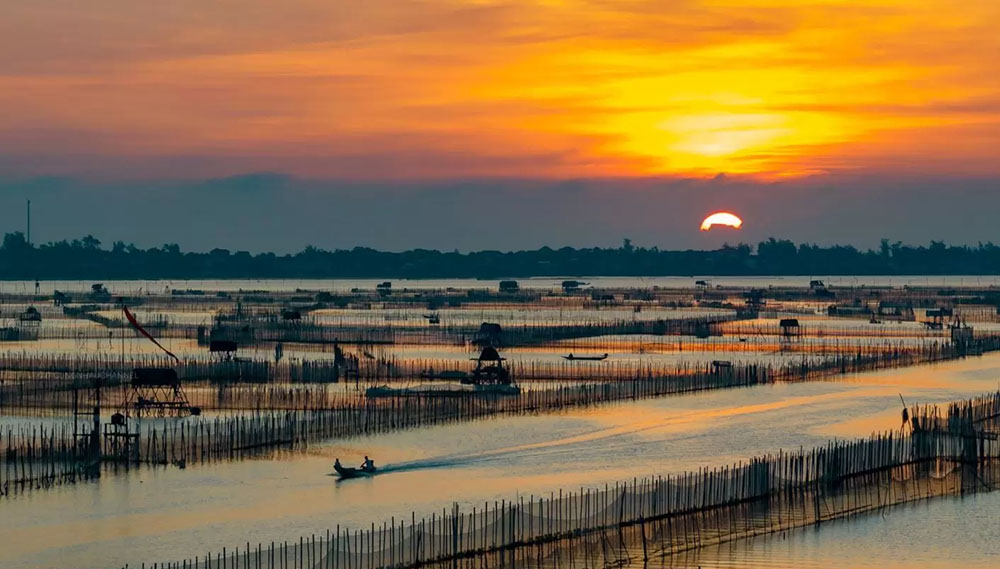
The dry season's clear skies and warmer temperatures make it perfect for exploring the imperial sites and enjoying vibrant festivals.
The rainy season transforms the city into a tranquil and introspective place, ideal for those who enjoy the serenity brought by less tourist traffic and the picturesque views of misty landscapes and overflowing rivers.
4. Hue's Weather by Month
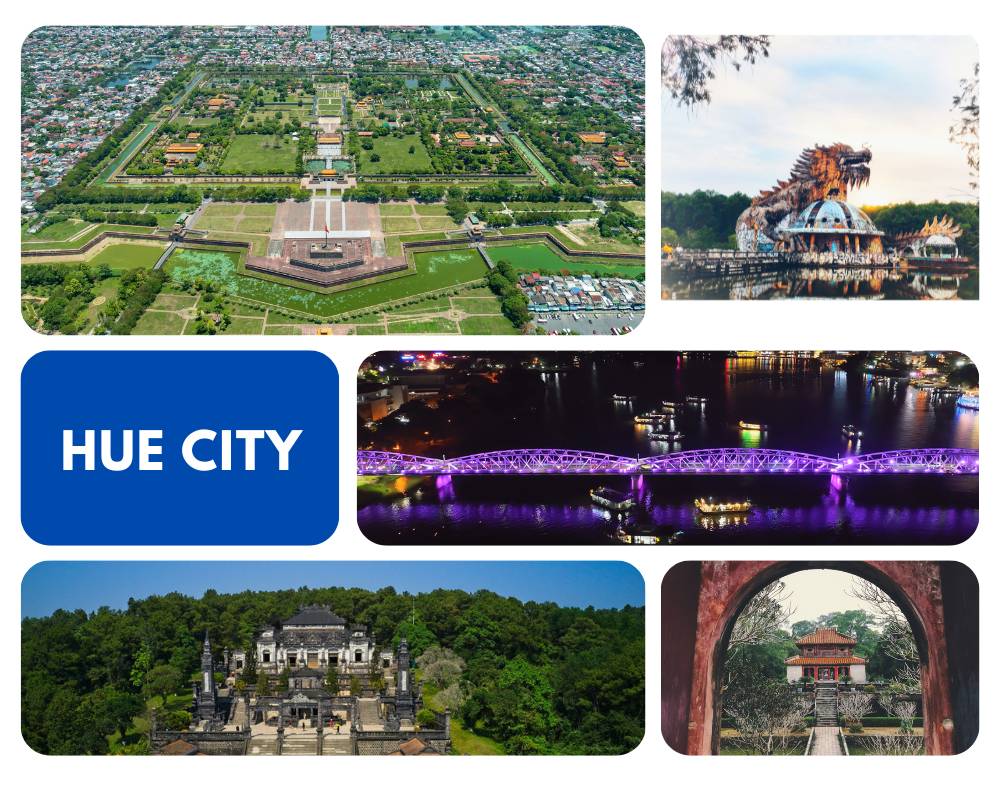
4.1. Weather from January to March
January to March marks Hue's transition from winter to spring. While January remains cold and rainy, the chill gradually disappears, giving way to the sun's warmth from February to March. These months offer a pleasant stay in Hue, with cool temperatures and lush greenery, making it a great time to appreciate the city's natural beauty.
4.2. Weather in April
April is one of the best times to visit Hue, as it marks the beginning of summer without the intense heat. The weather is favorable for various activities, from taking photos to enjoying the beach.
April also brings the biannual Hue Festival, a celebration of the city's culture featuring art performances, poetry recitations, and exhibitions. The vibrant atmosphere creates unforgettable memories.
4.3. Weather from May to July
From May to July, Hue experiences quite hot weather, ideal for water activities at beaches like Lang Co and Thuan An, or unwinding at Ho Truoi Lake and Lap An Lagoon.
These months are perfect for capturing sun-kissed photos, but remember to prepare for the heat with breathable clothes, hats, umbrellas, water, and sunscreen.
4.4. Weather in August
August brings neither hot nor cold weather to Hue, creating a calm and cozy atmosphere that enhances the travel experience.
This is an excellent time to explore Hue's sacred temples and mausoleums, such as Thien Mu Pagoda, Minh Mang Tomb, and Tu Duc Tomb, and appreciate their spiritual, historical, and architectural significance, all surrounded by stunning scenery.
4.5. Weather from September to December
From September onwards, Hue experiences persistent rain, requiring extra layers and an umbrella, but offering a unique experience. October's weather makes it particularly suitable for tea tasting in the Imperial City and savoring hot dishes and street food at Dong Ba Market.
For those who prefer cold weather, September to December is the best time to visit Hue, but be prepared for potential storms and floods by packing raincoats and waterproof shoes.
5. Determining the Best Time to Visit Hue
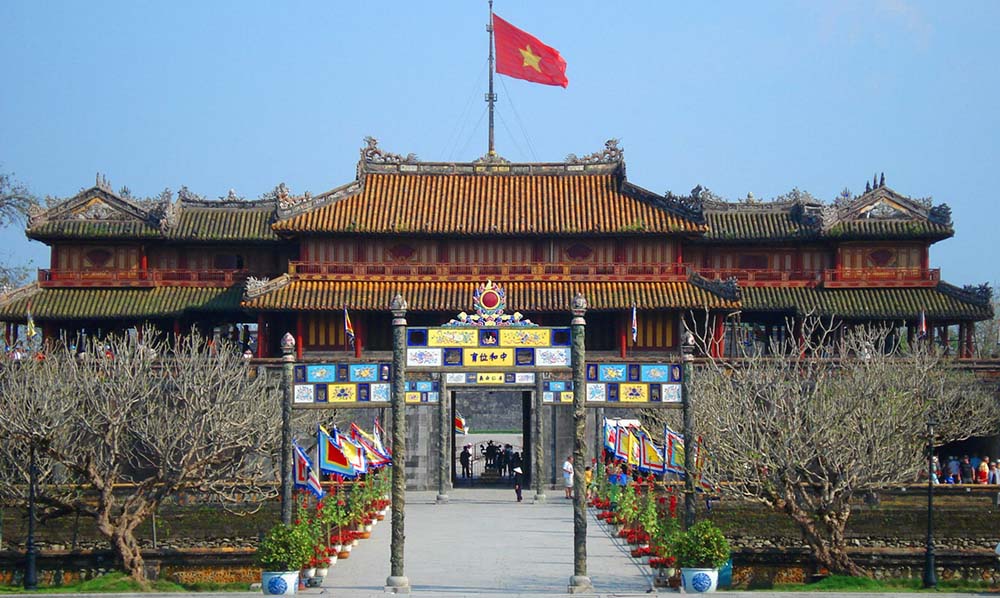
5.1. Ideal Time (February to April)
The best time to visit Hue is from February to April, during the spring season when the weather is ideal for all activities. The average temperature of 22°C (72°F) makes it comfortable to explore the city, and rainfall is at its lowest, ensuring your vacation won't be ruined by showers.
5.2. Traveling to Hue in January and May
January and May are also good times to visit Hue, despite the slightly increased rainfall. The temperature and humidity levels remain comfortable for tourists.
5.3. June and July
While it's possible to visit Hue in June and July, it's not highly recommended due to the hot summer weather, with an average temperature of 30°C (86°F). However, tourists can enjoy the deep blue skies in exchange for the heat.
5.4. August to December – Rainy Season
Visiting Hue during the rainy season from August to December is not recommended. August is particularly crowded, as it's the peak season for domestic travel.
From September to December, frequent and prolonged rains may affect your travel plans. Check Hue tour reviews for more insights on visiting during this period.
6. Festivals and Events in Hue
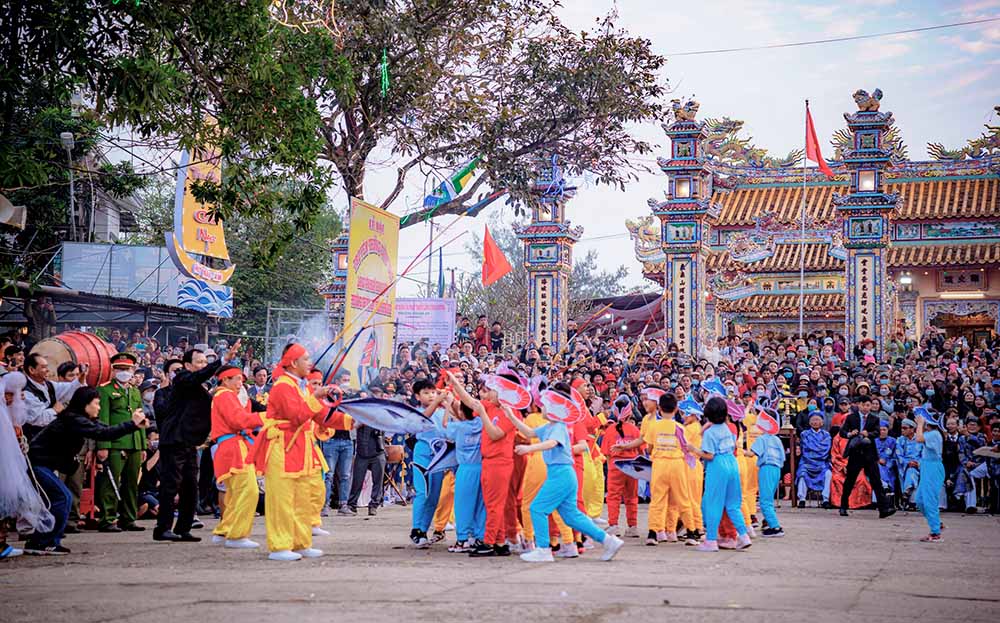
Hue's lively festivals and events can add excitement to your trip. Mark these events on your calendar to plan the best time to visit Hue.
6.1. Hue Traditional Craft Festival
The biennial Hue Traditional Craft Festival, usually held in late April or early May, showcases Hue's rich cultural tapestry through local crafts and artisans. Visitors can experience live demonstrations of traditional Vietnamese crafts like silk weaving, pottery, and lacquer work.
The streets come alive with exhibitions, workshops, and vendors selling handmade products, offering a fantastic opportunity to witness local artisans' skills and purchase unique souvenirs.
6.2. Ao Dai Festival
The Ao Dai Festival celebrates Vietnam's traditional dress, featuring fashion shows, exhibitions, and contests highlighting both traditional and contemporary Ao Dai designs. The event pays homage to this iconic garment while promoting Vietnamese cultural pride and tourism.
6.3. Hue Poetry Festival
Coinciding with the biennial Hue Festival, the Hue Poetry Festival celebrates Vietnamese literary arts, attracting poets from Vietnam and around the world.
Poetry readings, discussions, and workshops take place against Hue's historic and poetic landscape, providing a deeply cultural and intellectual experience.
6.4. Hue Cuisine Festival
Food lovers should attend the periodic Hue Cuisine Festival, which celebrates Hue's sophisticated and varied culinary traditions. Visitors can indulge in tasting events featuring traditional dishes from royal Hue cuisine and popular street foods.
6.5. Lotus Festival
The Lotus Festival, typically held in June when the lotus flowers are in full bloom, is a newer addition to Hue's event calendar.
Activities include lotus flower picking contests, boat races, and photography exhibitions, all celebrating the lotus's beauty and cultural significance in Vietnamese culture.
These events offer unique glimpses into Hue's traditions and culture, making them worthwhile considerations when planning the ideal time to visit Hue.
7. Useful Tips for Traveling to Hue
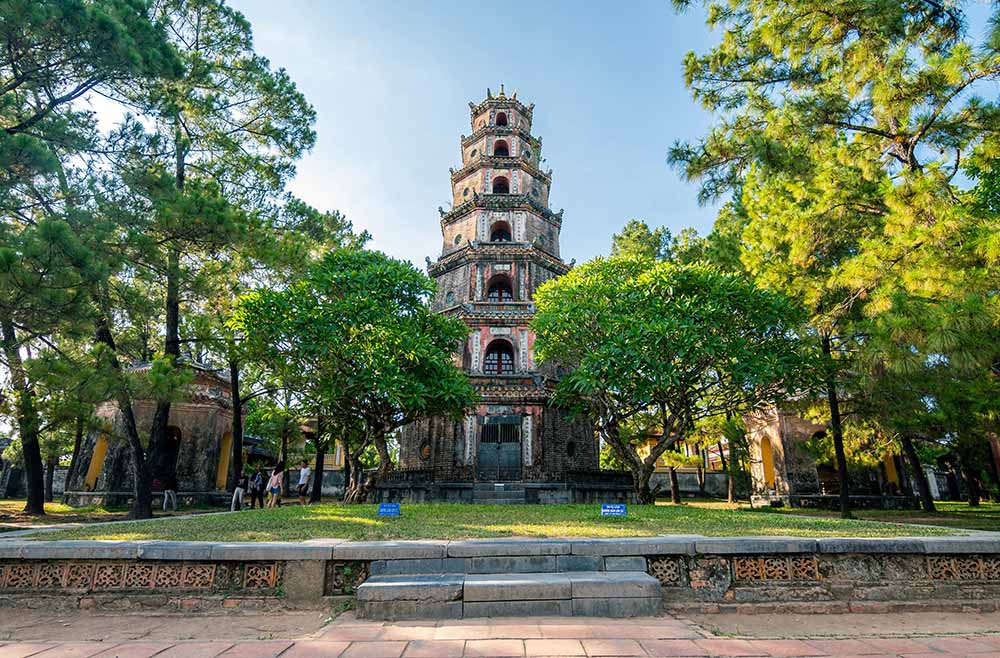
7.1. Packing Tips Based on the Season
Hot Season (May to August)
- Clothing: Lightweight, breathable fabrics like cotton and linen are ideal for the hot and humid weather. Long-sleeved shirts and pants can protect against the sun.
- Accessories: Sunglasses, a wide-brimmed hat, and sunscreen are essential to protect against the strong sun. A durable water bottle is also recommended to stay hydrated.
- Footwear: Comfortable, breathable shoes like sandals or breathable sneakers are advisable, especially if you plan to do a lot of walking.
Rainy Season (September to January)
- Clothing: Waterproof jackets or ponchos and quick-drying clothes are crucial due to frequent rain showers.
- Accessories: Bring an umbrella and waterproof bags for electronics and important documents.
- Footwear: Water-resistant shoes with good grip are necessary to navigate slippery streets.
7.2. Dos and Don'ts When Visiting Hue
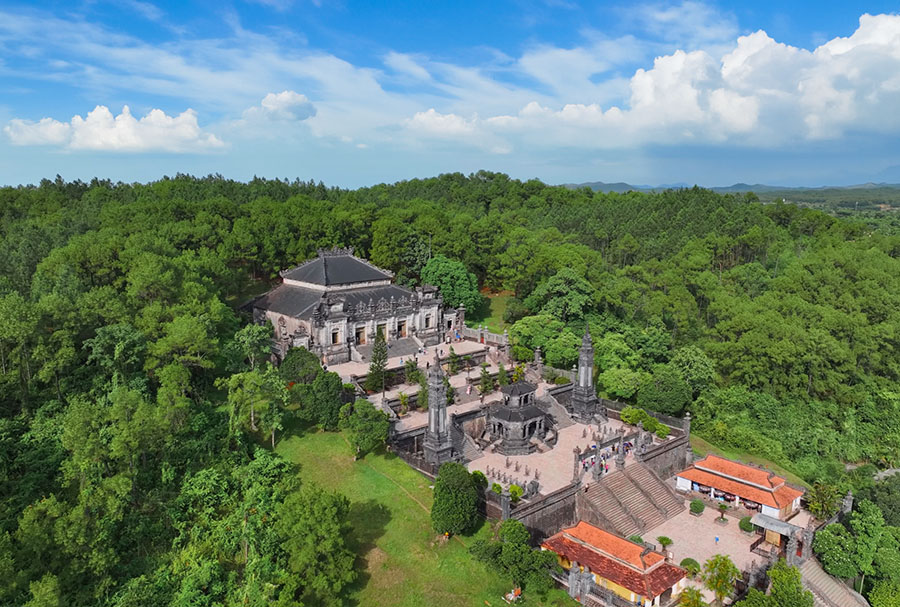
Cultural Etiquette and Customs
- Do: Dress conservatively when visiting temples and historical sites. Shoulders and knees should be covered as a sign of respect.
- Do: Be respectful when taking photos, especially in religious or culturally significant places. Ask for permission before photographing people.
- Don’t: Touch someone’s head or point your feet at people or religious objects—it's considered disrespectful in Vietnamese culture.
Safety and Health Advice
- Do: Use bottled water for drinking and brushing teeth to avoid waterborne illnesses.
- Do: Bring mosquito repellent and consider taking antimalarial medication if visiting rural areas, as recommended by health professionals.
- Don’t: Engage with street vendors or beggars aggressively. A polite ‘no thank you' is sufficient if you're not interested in what they're offering.
- Don’t: Leave your belongings unattended or flaunt expensive items in crowded places to avoid theft.
8. Must-See Attractions in Hue
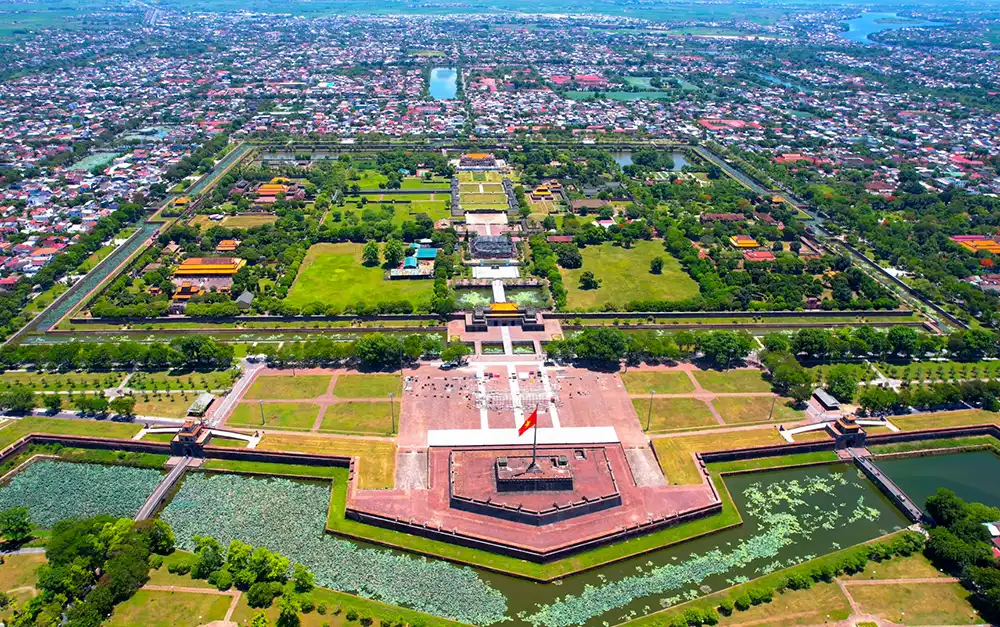
Hue is a city that boasts a rich cultural and historical experience for travellers, with a plethora of attractions to visit. Here are some of the must-see places in Hue:
First on the list is Hue Imperial City, a UNESCO World Heritage site. This vast complex of palaces, temples, and gardens reflects the grandeur of the imperial era and is a sight to behold.
Next up is the Thien Mu Pagoda. Located on a hill overlooking the Perfume River, it is a symbol of Hue's spiritual and cultural heritage. The stunning architecture and peaceful surroundings make it a must-visit destination.
One more unique attraction is the wooden Hue Museum of Royal Fine Arts that boasts 128 precious wooden pillars, each carved with four sacred animals and more than 1000 poems in Chinese characters. This museum is a treasure trove of historical artefacts and is a must-see for anyone interested in the rich history of Hue.
9. Conclusion On The Best Time To Visit Hue
Best time to visit Hue, Vietnam is from February to August. During this period, the weather is supportive for your outdoor activities, and the city is bustling with some exciting festivals.
Whether you're planning a family vacation or a romantic getaway, Hue has something to offer everyone. Start planning your perfect trip to Hue today and create unforgettable memories that will last a lifetime!
Now that you know the ideal time for your trip to Hue, start planning your visit with our Hue Travel Guide. This ancient city has many incredible sights to explore.
Read our article on the Top Things to Do in Hue for ideas on how to spend your days, from visiting historic monuments to sampling local cuisine. With the right timing and itinerary, your journey to Hue will be unforgettable.
FAQ
How long should I spend in Hue?
3 days is ideal if you wish to see Hue the real way. Day 1: The first morning in Hue should be treated slowly with a walk around Hue Citadel and the Imperial City. The visit can easily take your whole morning and exhaust you enough to enjoy a hearty lunch.
Is October a good time to visit Hue, Vietnam?
If you're planning to visit Hue during this season, it's best to avoid travelling in October or November as these are statistically the wettest months of the year.
Is it better to stay in Hue or Hoi An?
Is there more to do in Hue or Hoi An? Visitors will usually find more to do in Hoi An than Hue, as it offers more sights, attractions, and activities. Hoi An is better known for its food, beaches, historical sights, shopping, and impressive beauty, while Hue is more popular for its nightlife.
Is it worth visiting Hue in Vietnam?
The answer is an absolute yes. Hue is a must-visit destination for history enthusiasts and culture lovers. With its rich imperial heritage, Hue offers a unique glimpse into Vietnam's past, showcasing magnificent palaces, temples, and tombs that are steeped in centuries of history.

